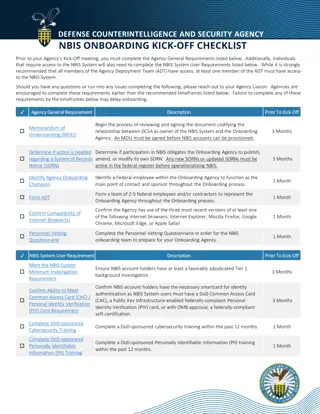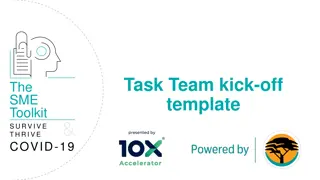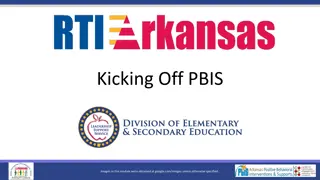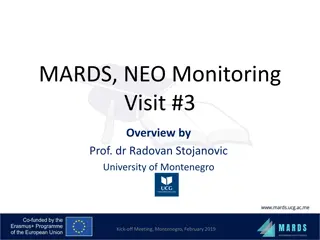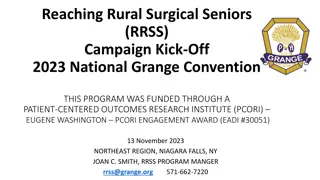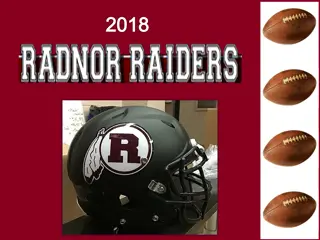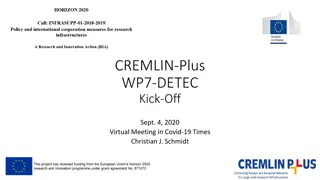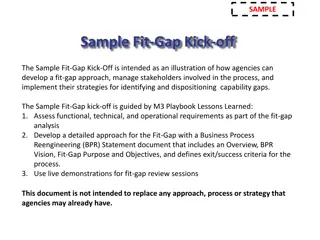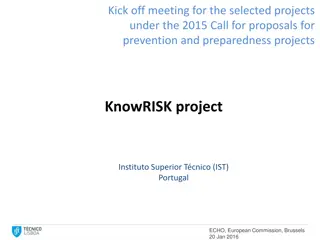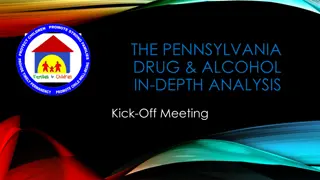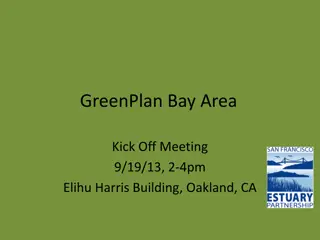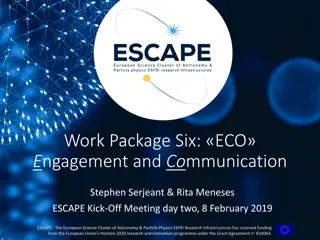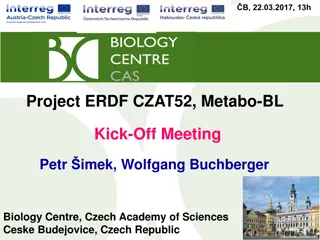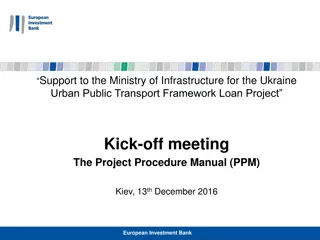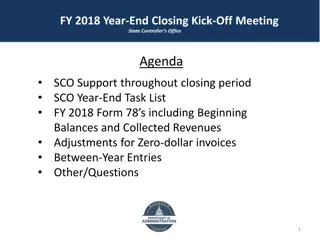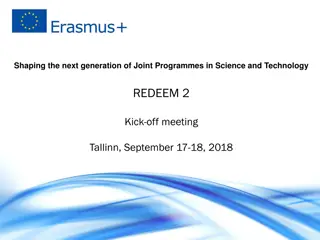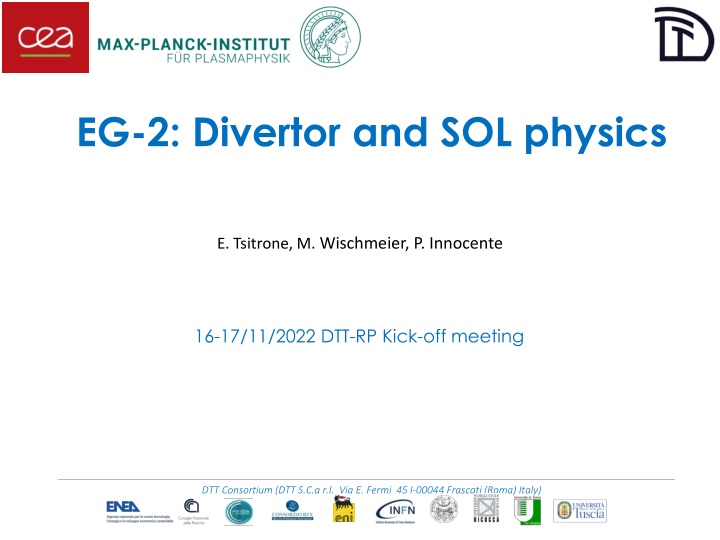
Divertor and SOL Physics for Fusion Research
Explore the research plan for divertor and SOL physics within the DTT Consortium, focusing on divertor regime characterization, reactor-relevant studies, and diagnostic selection. Topics include divertor regimes, high-power scenarios, detachment physics, and integration with other key aspects of fusion research.
Uploaded on | 2 Views
Download Presentation

Please find below an Image/Link to download the presentation.
The content on the website is provided AS IS for your information and personal use only. It may not be sold, licensed, or shared on other websites without obtaining consent from the author. If you encounter any issues during the download, it is possible that the publisher has removed the file from their server.
You are allowed to download the files provided on this website for personal or commercial use, subject to the condition that they are used lawfully. All files are the property of their respective owners.
The content on the website is provided AS IS for your information and personal use only. It may not be sold, licensed, or shared on other websites without obtaining consent from the author.
E N D
Presentation Transcript
EG-2: Divertor and SOL physics E. Tsitrone, M. Wischmeier, P. Innocente 16-17/11/2022 DTT-RP Kick-off meeting DTT Consortium (DTT S.C.a r.l. Via E. Fermi 45 I-00044 Frascati (Roma) Italy)
Introduction/1 Scope of the Research plan (EG2 RO understanding) : 1. 2. 3. Preparation for the exploitation of DTT Disseminate interest for DTT in the fusion community Assess compatibility of DTT design with the scope of the Research Plan for the divertor and SOL related programme Contribute to diagnostic selection and definition of requirements Prepare future enhancement, new divertor 4. 5. 18/03/2025 EG-2 | 16-17/11/2022 DTT-RP Kick-off meeting | 2
Introduction/2 Resources are limited so we have to select/prioritize What in the Research plan (first brainstorming) ? 1. 2. 3. 4. 5. In addition : contribution to diagnostics definition Characterization of divertor regimes Reactor relevant divertor studies First wall interaction and SOL Plasma-material interaction (including wall conditioning) Contribution to future enhancement, new divertor 18/03/2025 EG-2 | 16-17/11/2022 DTT-RP Kick-off meeting | 3
1) Characterization of divertor regimes Which divertor regime? Medium power (phase 1) High power (phase 3) o o SN ref case: steady state (SOL width, in/out asym), transients heat and particle flux o SN short and long leg comparison o Alternative divertor configurations : XD, SF, NT, DN at low power(?) o Start with attached case then high recycling, semi detached/detached ? o Balance between power dissipation for machine safety/compatibility & physics investigations in view of ITER/DEMO o Start with L mode, then H mode then alternative no ELM scenarios (NT, X- point radiator, I-mode)? o Operation in H/D/He plasmas to be considered? 18/03/2025 EG-2 | 16-17/11/2022 DTT-RP Kick-off meeting | 4
2) Reactor relevant divertor studies o Detachment physics: access to detachment, optimized impurity mix for seeding for various divertor configurations, achievable dissipative fraction, impact on confinement/pedestal o Dissipative regimes that would allow to PFCs alternative to the current mono-block technology o Study different collisionality scenarios (medium/high nG/n & Bp), is DTT relevant for C.S. Chang scaling (C.S. Chang et al, Physics of Plasmas, 2021) chapters, in particular Chapter 3) NB : integration divertor edge core key point (link with other o Extend to full discharge : ramp up / flat top / ramp down + entry/exit improved confinement mode o RMP interaction/ 3D studies o Characterization of He pumping for various divertor configurations / plasma scenarios 18/03/2025 EG-2 | 16-17/11/2022 DTT-RP Kick-off meeting | 5
3) First wall interaction and SOL o Ramp-up optimization to avoid tungsten influx from wall o 3D effects: interaction with wall limiters, ICRH antenna, gas-puffing o Radiation and CX fluxes estimation o Far SOL characterization o Wall conditioning : shall we foresee operation w/o low Z conditioning ? Is a boronized/lithiuminized wall/divertor interesting to study? 18/03/2025 EG-2 | 16-17/11/2022 DTT-RP Kick-off meeting | 6
4) Plasma-material interaction o Characterization of W erosion sources and impact on plasma core contamination and core performance o PWI studies: PFC erosion and lifetime / dust formation / fuel retention & removal / He and D induced material morphology changes NB : integration divertor edge core key point (link with other chapters, in particular Chapter 3) 18/03/2025 EG-2 | 16-17/11/2022 DTT-RP Kick-off meeting | 7
5) Future enhancement, new divertor Divertor enhancements for phase 3 requires dedicated preparation and tests to be planned well ahead : o Liquid divertor ? o No mono-block technology larger components? o New optimized divertor shape ? o New diagnostics ? o Programme to be defined for using the 4 divertor test sectors capabilities at best 18/03/2025 EG-2 | 16-17/11/2022 DTT-RP Kick-off meeting | 8
Contribution to diagnostics definition as Research Plan progresses: o What measurements, definition of requirements: time/space resolution, measurement ranges o For which phase: phase 1 /phase 3 o Compatibility of diagnostics with various divertor configurations (eg control of X point radiation possible) o Key diags : IR, LP, visible spectroscopy, Edge TS + PWI diagnostics: samples, microbalance, RGA, laser based diags for wall composition (LIBS) NB: pre-requisite divertor and SOL physics experiments related diagnostics operational and commissioned 18/03/2025 EG-2 | 16-17/11/2022 DTT-RP Kick-off meeting | 9
Interaction with other chapters (EG3, EG6 mainly) : o Interaction with Scenario Chapter (EG3) : W sources under EG2 / W transport under EG3 ? Impact of divertor configuration on pedestal/core performance : under EG3 ? o Interaction with Technology Chapter (EG6) : PFU aging / damage / melting, material testing (incl. pre and post exposure characterization), liquid divertor, larger PFC target components Or PWI in general ? o Control and operational aspects under which chapter ? Control : PFC monitoring (machine protection) and real time control of heat loads/ detachment (physics) : under which chapter ? Operation : Wall conditioning, diagnostic commissioning 18/03/2025 EG-2 | 16-17/11/2022 DTT-RP Kick-off meeting | 10
Organizational issues and open questions : o KoM with EG2 group planned after EG1 strategy meeting (Dec 5) o Email to be sent for KoM end of December / Early January o Having the following asap would be very useful : Appendixes with the short description of all DTT subsystems Template (Word, Latek ? Ref, tables, figures handling etc ) Contact person(s) needed when we have a question on the hardware (PFC and diags in particular for EG2) o Close link with EG3 needed to be consistent with the progress foreseen for scenario development (short description on this already in EG1 ?) 18/03/2025 EG-2 | 16-17/11/2022 DTT-RP Kick-off meeting | 11

